Difficulties & Challenges of One
Over-Responsibility, Perfectionism, Inner Taskmaster
At work and at home Ones take on too much responsibility because they see what needs doing and have trouble ignoring what they see. The One is trying to be good, so can feel obliged to do what others would ignore. They find it hard to cut themselves some slack.
Perfectionism means having unrealistic standards and feeling compelled to meet them. It’s not about having high standards and doing your best to meet them, there is a built-in impossibility.
Ones identify with the voice of the Inner Critic and they have a particularly harsh voice in their head called the “Inner Taskmaster” (Riso-Hudson). We all have an Inner Critic or Judge that feels authoritative, like the voice of God or a parent in our head, and its messages are often mean and untrue. Things we would never say to a friend we “say” to ourselves. But for Ones this voice is driving the bus.
We all need to work towards noticing the voice of the Inner Critic, distancing ourselves from it and defending ourselves against it- but this is particularly the journey of a One.
Ones say that they feel “flawed” somehow. All their efforts to be good- being overly responsibile, fearing making a mistake, perfectionism- can be understood through this lens. It is their sensitivity to goodness turned against themselves.
When Ones become more constricted under stress, their feeling of being personally responsible and obligated to fix things becomes more intense.
Ones can take on too much responsibility and have standards that are unreasonably high. Having an “eye for error”, seeing everything that needs to be done, the unhealthy One has trouble letting things go.
On a practical level, this might be focusing on the daily “to do” list and upping the ante on things like organization and orderliness, maybe getting uptight about things that aren’t that important. Does folding sweaters the “right” way really matter? Under stress this can seem like a slight case of OCD as the effort to keep order is channeled into details.
Resentment, Anger
Eventually Ones grow tired of being so responsible, but they have trouble not doing what they think needs doing. Instead of lowering their standards or letting things go, when less healthy they continue doing everything they feel needs to be done while becoming resentful. It feels like others are not doing their fair share, which may be true.
We know that One is in the Instinctive or Gut Center of Intelligence with Anger underneath. The Vice of One is straight up Anger. But, like Nines, Ones often do not realize that they are angry. Ones will usually relate to the word resentment however, and they can recognize their anger through the lens of resentment.
The dictionary definition of resentment is “a feeling of indignant displeasure or persistent ill will at something regarded as a wrong”. Ones will bottle-up their anger, but it may leak-out in this indignant, righteous sort of tone. Anger also shows up as body tension, Ones become more rigid and tense in their bodies. Others can often sense the One’s anger even when the One is unaware because of this palpable tense energy.
The Little Red Hen is a One story you may have read as a child. You can read or listen to the story online with the One personality in mind- it’s only a few minutes long. It’s a story that speaks to the origin of resentment as “the Little Red Hen finds none of her lazy friends willing to help her plant, harvest or grind wheat into flour or to prepare the dough or bake it, but all are eager to eat the bread she makes”.
In the story, the Little Red Hen does not share the bread she made and the moral of the story seems to be “if you want to eat the bread you have to do the work”. But in real life, a One might share the bread, despite the fact that she did all the work and others refused to help, while feeling resentment. This is the bind the One is often in- feeling obliged to do the work but resenting others who do not do their share.
Critical, Rigid
When unhealthy, the One relies on ever tighter control internally (self-control) and externally (over their world) to maintain their sense of being correct or good. The more control is used to be “good”, the more the “bad” side is not allowed and is repressed. This amounts to instincts and appetites that are completely natural and normal being disallowed and a growing rigidity.
A more constricted One will not be able to indulge themselves, buy those shoes or have that ice cream, or let loose spontaneously. Ones often have an outlet in their lives where they do have fun- something playful- but it is compartmentalized. The whole picture is one of inner split and inner battle to control what feels like the bad part of themselves.
We can all relate to the inner battle between good and bad. The cartoon angel on one shoulder and the devil on the other - will we be virtuous (adhere to the diet) or bad (eat the ice cream). But most of us take this with a grain of salt and eat what we feel like sometimes. For the unhealthy One this split intensifies creating more control and less freedom.
Striving to be correct, to not make mistakes or be wrong, the One becomes more rigid, more judgemental and more critical of themselves and others. They may adhere to strict beliefs about right and wrong or see things increasingly as “black and white” with no room for grey. Ones often think they know the right way to do things and want to teach/show others. For example, they might follow a strict diet or regimen and begin to tell others what they shouldn’t eat or do that is unhealthy.
At their worst, Ones sense of mission becomes aimed at correcting others, and they can descend into being rigid moralists. The character Enid Strict the Church Lady is a parody of unhealthy One.
Good morning sinners
The Church Lady - SNL
Being human includes our “bad” aspects which now must be split off even further by the unhealthy One. Because being “good” is achieved by repressing natural instincts and appetites, they say Ones have “a dog chained in the basement”. Think of the Puritans and the Scarlett Letter, the Handmaid’s Tale, or the movie Footloose where dancing is banned. Such rigid moral forces are acting out this split collectively.
The most extreme example of the split between good and bad is the outward paragon who is secretly doing very bad things- the priest who abuses, the senator with the page boy, the evangelist who is a fraudster.
Consider how understanding this inner split between “good” and “bad” ties together your understanding of One. The whole gestalt of One- trying to be good and not make mistakes, the self-control and discipline, the critical judgement, the harsh Inner Taskmaster, being responsible but feeling resentment- how this all relates to splitting off and disallowing what seems bad while identifying with the good. The unhealthy One puts a lot of effort into maintaining this split which explains the rigidity that can develop. Healing this split means allowing everything in- the good, the bad and the ugly – because we are only human.











